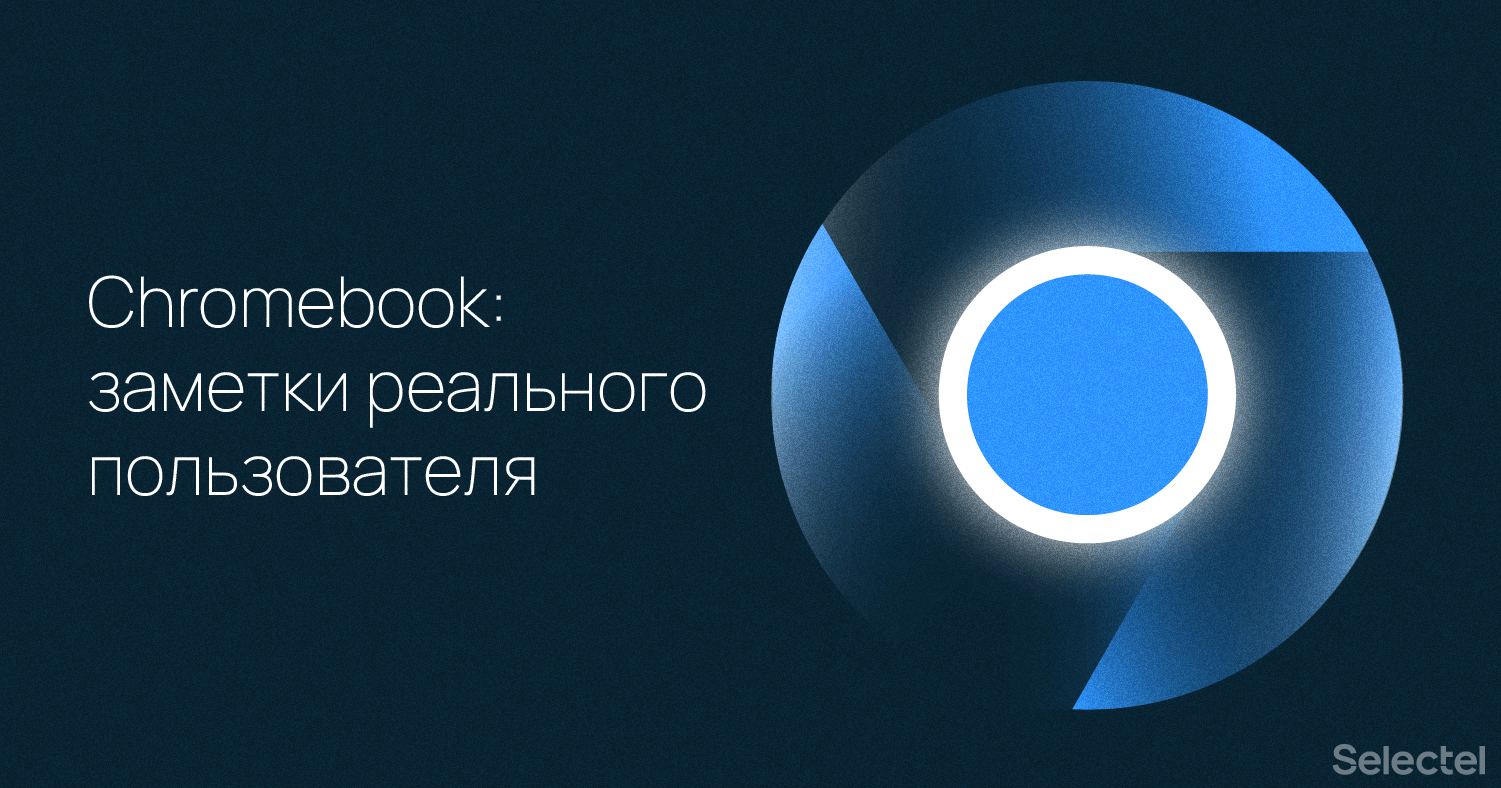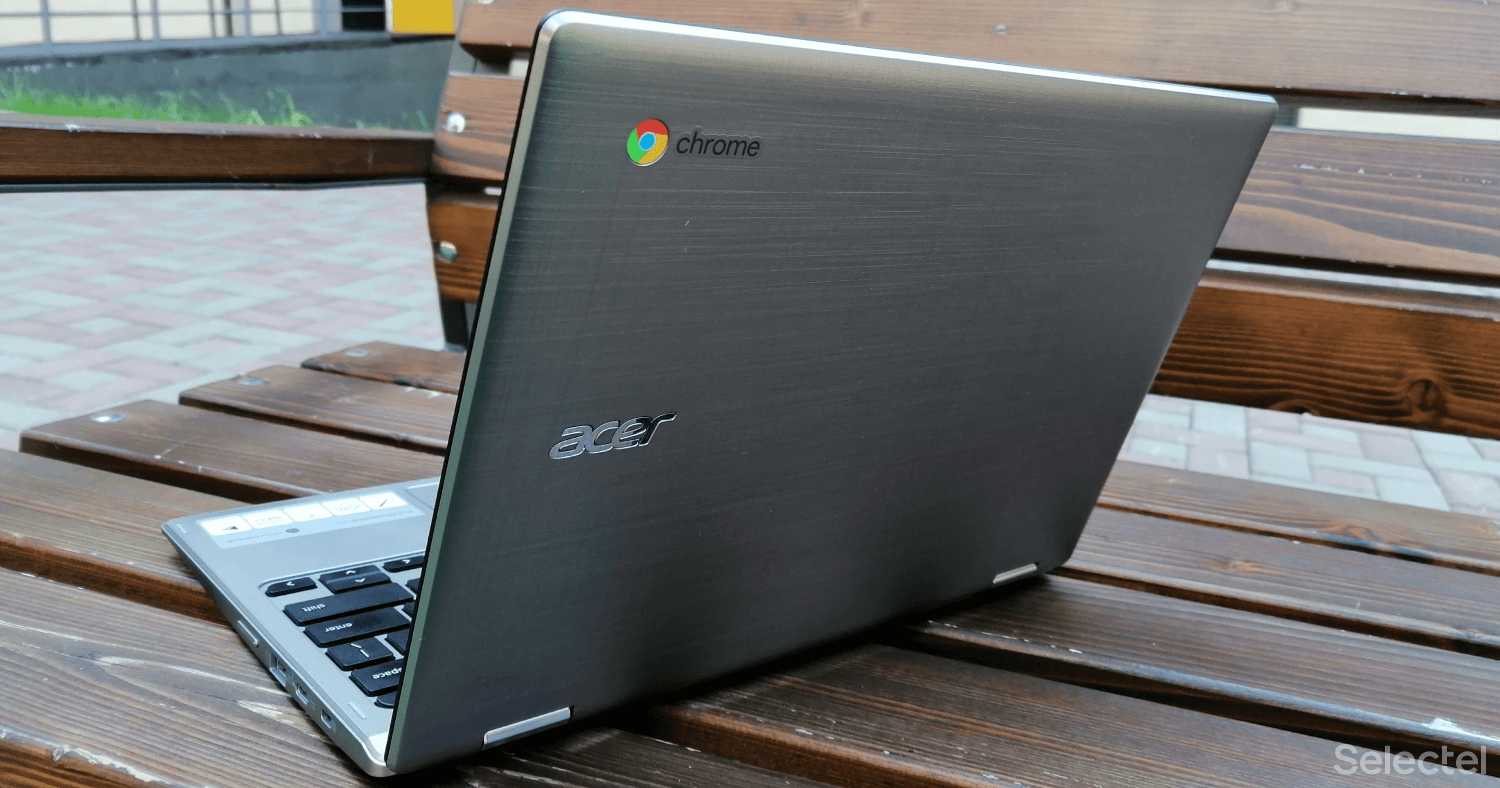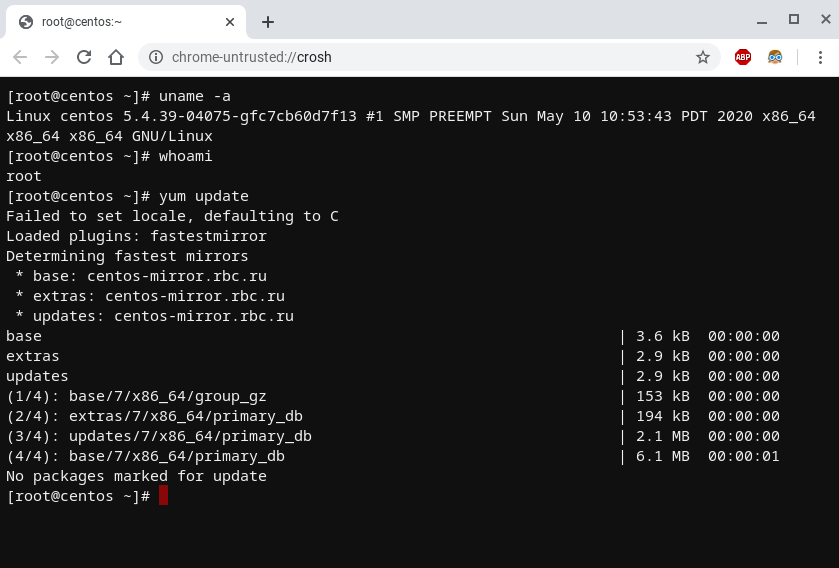
Two years ago, my second laptop was a Chromebook. In this article, I will share my personal experience of using a ChromeOS device.
I had to get acquainted with operating systems, both quite familiar (Windows, Linux, MacOS), and exotic (OS / 2, QNX, Solaris, KolibriOS, ReactOS and the like). Each time I met both the positive and negative sides of each of them. It makes no sense to list them, everyone makes their own choice. But for myself, I have defined a number of criteria that my ideal version of the operating system must meet.
She must be:
- productive even on weak devices;
- protected from viruses and malicious applications;
- stable in every sense;
- supporting multiple devices;
- not requiring "file completion".
Thus, for me, the entire Windows line disappears instantly. Especially since the release of the "top ten" with its updates
As a result, my main laptop (MSI GE60-2OC) runs on two operating systems, depending on the type of load required. All work tasks are performed on Linux ( OpenSUSE Tumbleweed), and I run games and multimedia entertainment on Windows (the very first build of Windows 10, where you could still turn off updates by minor manipulations). So everything went on as usual until I needed a backup laptop. I planned to use it on business trips and as a replacement option in case of failure of the main computer.
Here the device should have been:
- compact (fit even in a small backpack);
- light (no more than 1.5 kg);
- with good autonomy (8-10 hours minimum);
- inexpensive (I set the bar at $ 400)
Almost no device met such criteria. After a couple of weeks, a solution was found - a Chromebook. In most cases, my work is tied to the ecosystem from Google, so the decision seemed logical. But in Russia, the choice of chromebooks was extremely scarce, so I had to ask a friend from the USA to go to BestBuy and buy the device I needed.

My new assistant was Acer Spin 2 in 1 Chromebook for $ 350 including taxes and shipping. It is a small convertible laptop with fully passive cooling, 10-hour battery life, touchscreen and Wacom pen support. The latter is very convenient for handwriting. But the most interesting was his ChromeOS operating system.
Is it just a browser?
When I took a Chromebook, I was prepared for the fact that this OS can do nothing but a browser. But when the device was in my hands, it became clear that its capabilities are much wider and more interesting. First of all, ChromeOS is Gentoo Linux with locked root access and an excellent lightweight graphical shell.

The operating system is very well optimized and starts up in 5-7 seconds. You use your Google account to sign in, but that doesn't mean you have to be online all the time. If there is no network, then you will still be able to log in under the last details of a successful login.
Updates roll in here automatically, but unlike You-Know-Who, you only reboot when you want to. In my memory, there has never been an update that would slow down the system startup, cause problems with drivers or other difficulties. On the contrary, here updates bring very specific new features. One of them was the introduction of LXC containerization.
And what, so it was possible?
Since February 2019, the Linux (beta) tab and the Enable button have appeared in the settings . After clicking it, the container was automatically downloaded and it became possible to run any software for the Linux operating system, and the Linux Files directory was added to the file manager .

By default, a container with Debian is installed, so the installation of any application is reduced to a banal apt install or simply copying the required DEB package to the above directory. Double-clicking on the package causes the installation process. All Linux applications are automatically registered in the main menu, which does not require any additional "dancing with a tambourine".
I want a container with a different OS - not a problem. We open the system console directly in the browser ( Ctrl + Alt + T ) and "fall through" into the system container termina .
vmc start termina
Now all the commands for managing containers are available to us. For example, I want CentOS 7:
lxc launch images:centos/7/amd64 centosThe container will download and run. Now we get interactive access inside:
lxc exec centos -- /bin/bashProfit!

And now you have not only Debian, but also CentOS.
Android apps, seriously?
For some reason, when it comes to apps on Chromebooks, everyone forgets that the Google ecosystem is also Android. Yes, GApps are natively launched in ChromeOS and you can safely install almost any Android application. And that means only one thing: an almost unlimited choice of apps for work and play.

A small minus of ChromeOS is that some of the codecs are missing from the system, so you can't watch any movie out of the box. Install MX Player and the problem is solved. We need OpenVPN - just install from Google Play and import the required profile. Play Hearthstone or install Telegram on ChromeOS? All this also does not cause the slightest difficulty.
What else?
Drivers are a perennial problem in any operating system. Is ChromeOS so bad with them? A: Most of the hardware you plug into your Chromebook will work properly. Plus, it is possible to forward USB devices inside the LXC container, which makes it easy for Linux applications to work with it.
And since we are talking about which Linux applications run on ChromeOS, I’ll add - in fact, that's all. First of all, I put Visual Studio Code, Gimp and WINE there. The latter allows you to run simple Windows applications.

Thus, we get a fairly versatile machine that can run applications from three worlds at once: Windows, Linux and Android. Isn't it cool? The Powerwash system also deserves special attention . If suddenly the system began to work unstably, then it can be reinstalled entirely with one single button. I had no reason to use this feature, but it was interesting how it worked. Two minutes and you have a brand new OS with no trace of any changes.
To summarize
Chromebooks are a very interesting class of devices that can handle a wide variety of tasks. The operating system is constantly evolving, adding more and more features. This is not only a browser, but also the ability to use applications written for Windows, Linux and Android. Personally, my opinion is an ideal tool for study and work trips.
It is a pity that in Russia these devices did not become popular, although this is understandable. There are tasks that are too tough for Chromebooks, and only professionals and enthusiasts will delve into the subtleties of customization.